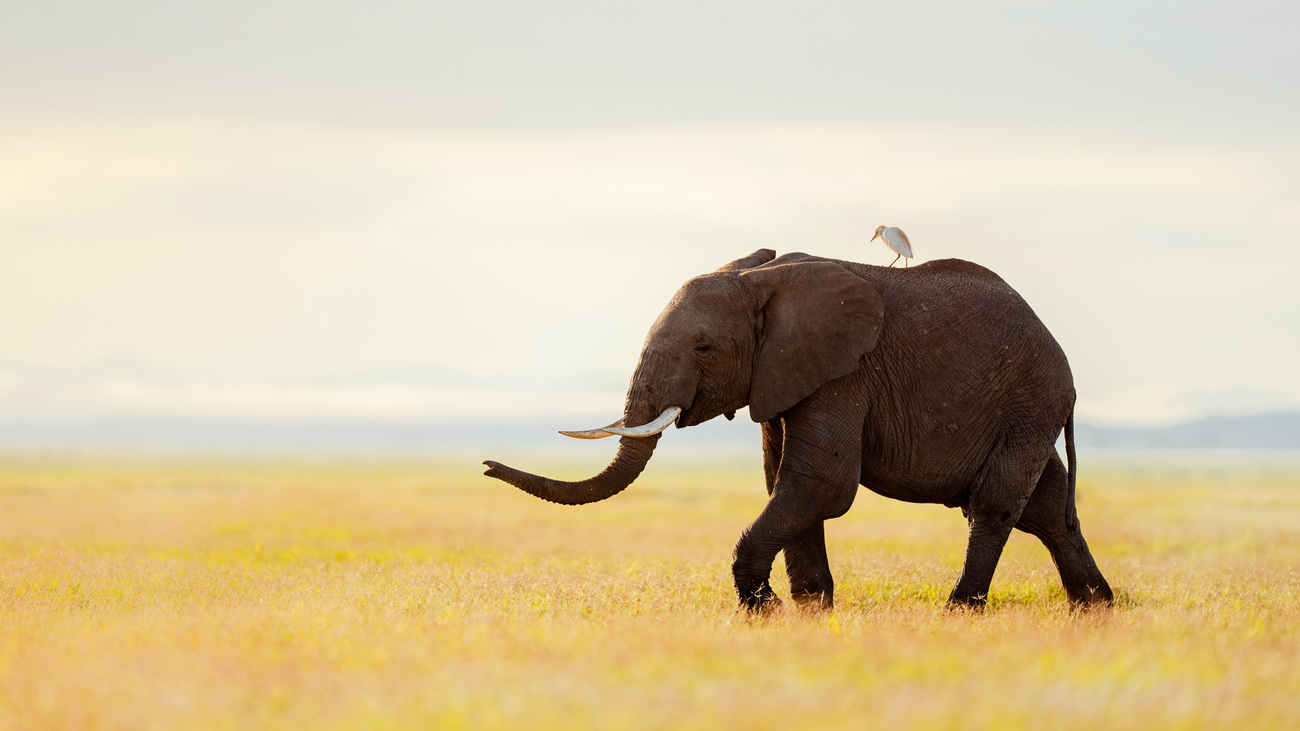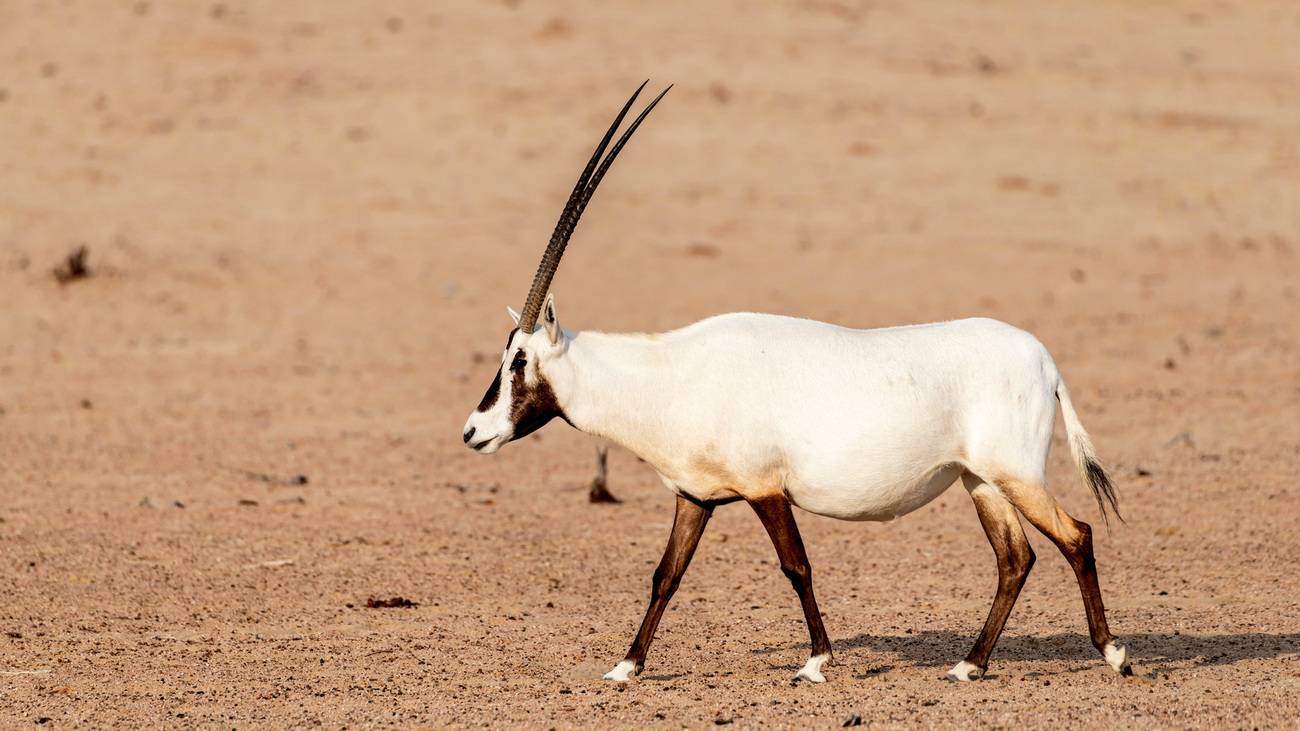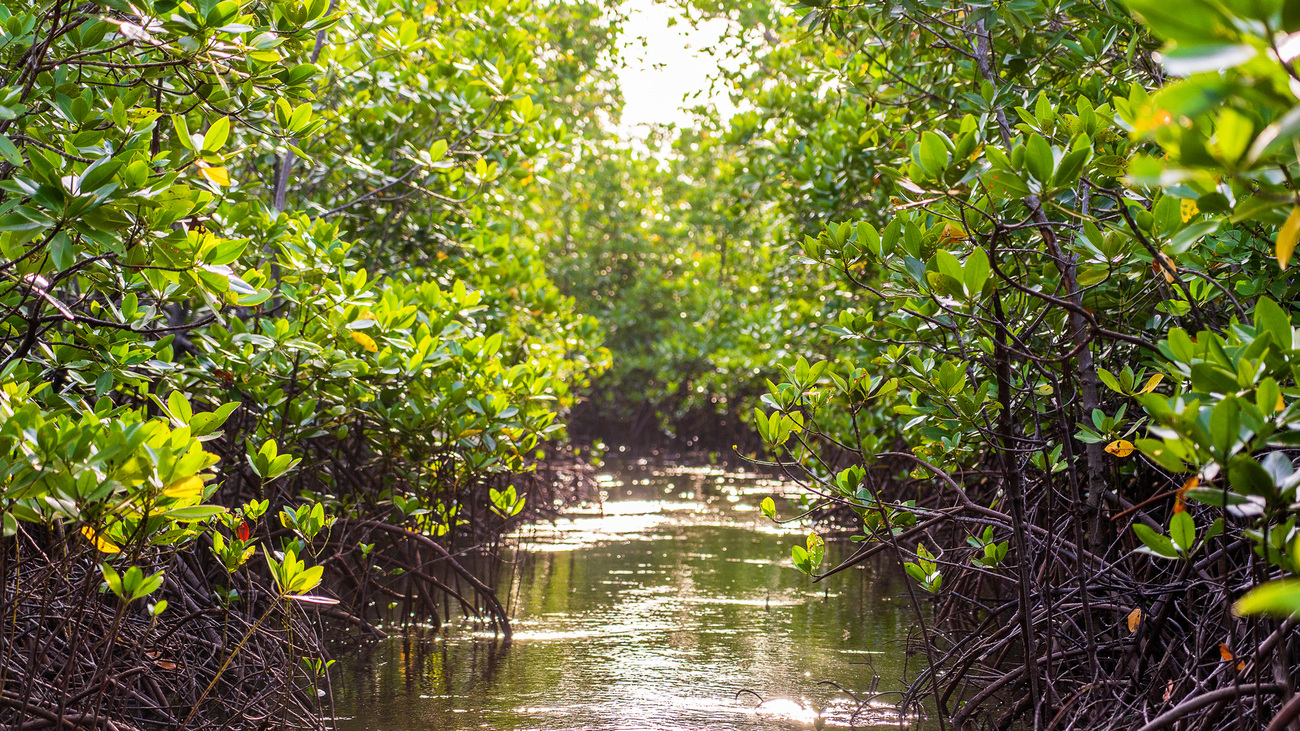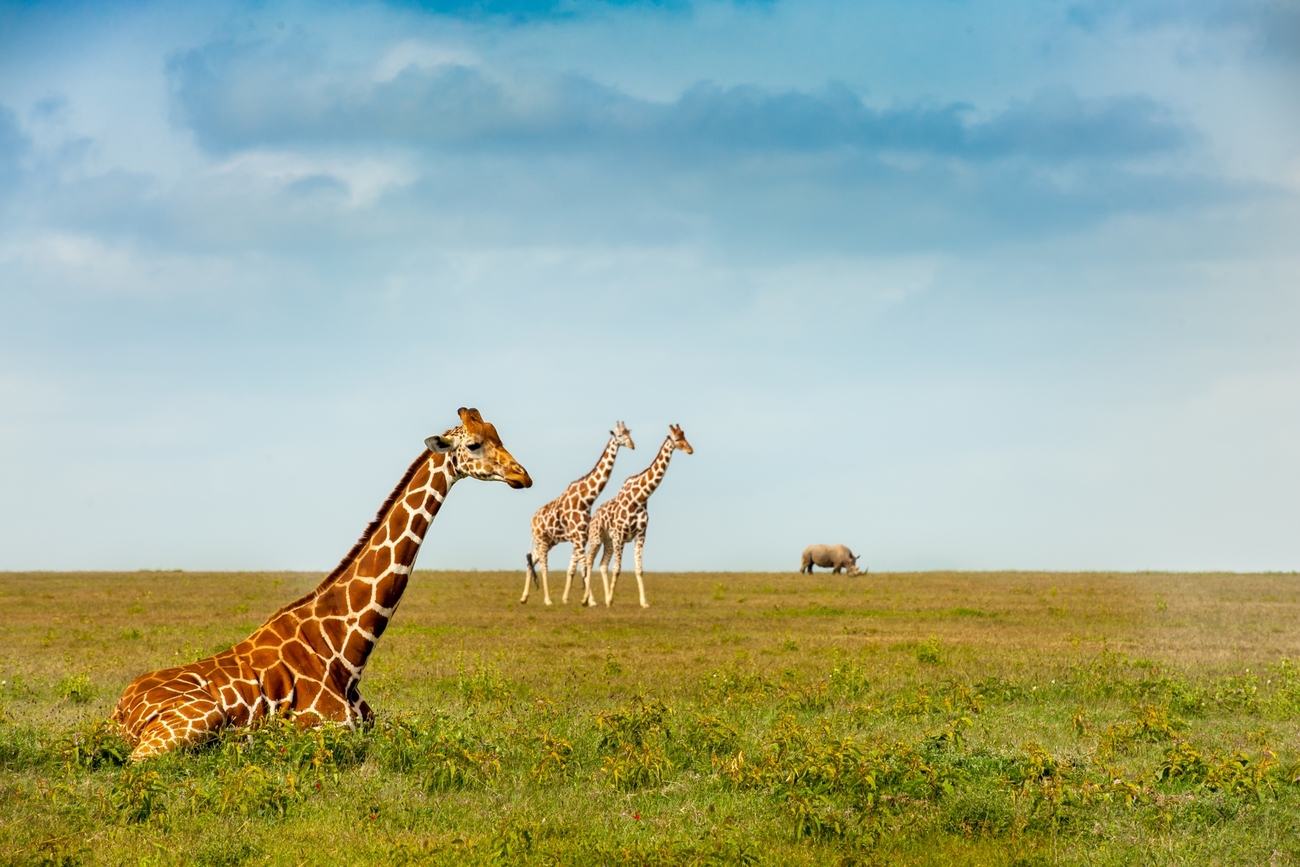Ecosystems: terms and definitions
Ecosystems: terms and definitions
Ecosystems are complex webs of life. They consist of many different animal and plant species and non-living things, like water, air, and soil.
These factors combine to create a unique ecosystem, with each individual element playing a vital role. Losing just one species can stop an ecosystem from working as it should.
Just as ecosystems are complex, so are some of the terms used to describe them. Here, we’re looking at some commonly used terms when discussing ecosystems and conservation.

Abiotic factors
Abiotic factors are the parts of an ecosystem that aren’t alive. This includes things like soil, water, air, temperature, and light. In an aquatic ecosystem, for example, abiotic factors include things like ocean currents and the level of salt in the water.
These ecosystem components may not be living, but they still greatly impact ecosystems and the living organisms within them. For example, the pH of the soil, sunlight levels, temperature, and water levels all affect plant growth. Abiotic and biotic factors work together to create unique ecosystems.
Aquatic ecosystem
Rivers, lakes, estuaries, wetlands are just a few examples of aquatic ecosystems. An aquatic ecosystem is any body of water, from the largest ocean to the tiniest puddle.
They fall into two categories: freshwater ecosystems (like rivers and lakes) and marine ecosystems (like oceans and seas).
These ecosystems are home to a vast array of organisms, including large marine mammals, microscopic plankton, and 32,000 species of fish. In addition to supporting this aquatic life, aquatic ecosystems recycle nutrients, purify water, and help manage floods.

Biome
A biome is a large area that can be identified by the characteristics of its climate, plants, wildlife, and soil.
There are six major types of biomes on our planet: marine, freshwater, forest, desert, tundra, and grassland. However, there is some debate about biome categorisation. Some scientists say we can categorise the world into as many as 11 different biomes.
These biomes are often broken down into more specific types. For example, we can divide the grassland biome into temperate grasslands and tropical grasslands (also called savannahs).
Biotic factors
Biotic factors are the living parts of an ecosystem. This includes things like plants, animals, fungi, and microorganisms.
For example, when there are many wolves in an area, more deer may become prey. And too few grazing animals can lead dominant plants to outcompete other species.
Along with abiotic factors, biotic factors help shape our ecosystems. They contribute to nutrient cycling, energy flow, and ecosystem stability.
Boreal ecosystem
Boreal ecosystems, within taiga biomes, cover the north of North America, Europe, and Asia and circle the North Pole.
Boreal ecosystems are characterised by coniferous trees and long, cold winters. Average temperatures in the taiga biome range from just above freezing to -10 degrees Celsius (14 degrees Fahrenheit).
This type of ecosystem takes up around 17% of the world’s land surface area and is home to many animal species, including lynx, moose, bears, wolves, and many migratory birds. The boreal ecosystem is one of the types of ecosystems most vulnerable to climate change.

Carnivore
A carnivore is an animal that feeds on the meat of other animals, either by hunting and killing other animals or by scavenging on the carcasses left by others.
There are more than 270 different carnivorous animal species, including lions, wolves, sharks, and birds of prey. Some carnivorous plants, like the Venus flytrap, also exist.
These predators play an important role in ecosystems. They help regulate populations of prey species and prevent vegetation from being over-grazed.
Coniferous forest
Coniferous forests are mainly made up of coniferous trees that grow needles instead of leaves and cones instead of flowers. These trees are evergreen, meaning they don’t lose their leaves over winter, and they include trees like pine, fir, cedar, spruce, and redwood.
Coniferous forests tend to be found in areas with long winters or relatively high rainfall. The northern boreal forest, which circles the North Pole, is a type of coniferous forest. However, temperate coniferous forests exist throughout the world, and there are also a few pockets of tropical coniferous forests.
Deciduous forest
Unlike conifers, deciduous trees lose their leaves every autumn and grow new ones each spring. Deciduous forests include trees like oak, beech, birch, elm, and maple. They’re found in three main regions—eastern North America, western Eurasia, and northeastern Asia. These areas have a temperate climate, a winter season, and year-round rainfall.
Detritivore
Detritivores, also known as decomposers, are organisms that feed on dead and decaying organic matter, such as fallen leaves, animal carcasses, and animal droppings. Earthworms, bacteria, and fungi are examples of detritivores.
These creatures play a vital role in ecosystems. Without them, the dead and decaying matter would just pile up. In addition to cleaning up, detritivores help recycle resources. They break complex organic materials down into more basic substances that help plants grow, like water, oxygen, calcium, and nitrogen.
Desert
Deserts are arid ecosystems that cover one-fifth of the Earth’s surface. These habitats get very little rainfall and experience extreme temperatures.
Some deserts, like the Sahara, are incredibly hot, with daytime temperatures reaching 54 degrees Celsius (130 degrees Fahrenheit). There are also cold deserts. Antarctica is the largest and coldest desert on Earth, with temperatures as low as -89 degrees Celsius (-128.2 degrees Fahrenheit).
Despite these harsh conditions, various animals and plants have adapted to live in desert environments. Camels, reptiles, succulents, and cacti are just a few examples. Desert-dwelling organisms have developed ways to store water or to lose heat more efficiently.

Ecological balance
Our ecosystems are closely interconnected webs of life. Ecological balance is the state of equilibrium within that web. It’s the degree to which both biotic and abiotic factors remain stable and supportive of one another.
Maintaining ecological balance is important because seemingly small changes can significantly affect an ecosystem. For example, the loss of a single species or rising ocean temperatures has a far-reaching impact.
Human activities like habitat destruction and fragmentation, pollution, farming, and climate change are leading to a loss of habitat and biodiversity, disrupting the world’s ecological balance.
Ecosystem
An ecosystem is a complex network that combines living organisms, a physical environment, and their relationships within a specific geographical area. These areas vary wildly in size, from a single drop of water to a whole biome. However, ecosystems all involve the flow of energy and cycling of nutrients.
The whole of the Earth’s surface is made up of interconnected ecosystems, and it’s important that we protect them.
Ecosystem collapse
Ecosystem collapse occurs when an ecosystem becomes destabilised. The complex network is disrupted to the point that it suddenly stops working, causing the features of the ecosystem to change, sometimes irreversibly.
Every ecosystem's tipping point is different. Some are more resilient than others. Some ecosystem collapse is caused by events that happen naturally—like fires, landslides, disease, or flooding—but it can also be caused by human activity. Pollution, invasive species, climate change, and overuse of resources can all lead to ecosystem collapse.
Ecosystem engineer
An ecosystem engineer is any species that significantly changes its environment. For example, elephants are ecosystem engineers. As they move through forests to find food, they create clearings so new plants get more sunlight, dig up watering holes that allow other animals to drink , and disperse seeds in their dung.
There are two types of ecosystem engineers: allogenic and autogenic. Allogenic engineers change the habitats around them, while autogenic engineers alter their own structures. The elephant is an allogenic ecosystem engineer, while trees are autogenic ecosystem engineers. As they age, trees’ trunks and branches grow, creating habitats for a variety of animal species.
Ecosystem restoration
Ecosystem restoration occurs when we support the recovery of ecosystems. These ecosystems may have been degraded or destroyed by human activity.
People are working in many ways to restore ecosystems. Landscape conservation, planting trees, setting fishing quotas, and reintroducing key animal species are all examples of ecosystem restoration.
Sometimes, passive restoration is enough. In this method, human disturbance is removed from the ecosystem, and it is left to recover by itself. This is also known as rewilding.
Ecosystem services
Ecosystem services are all the benefits that humans get from ecosystems. This includes:
● Provisioning services, including resources like food, water, and timber
● Regulating services, such as the regulation of climate, flooding, and disease
● Supporting services, including nutrient cycling, soil formation, and oxygen production
● Cultural services, such as scientific, recreational, and therapeutic benefits
Ecosystem services greatly impact our well-being, survival, and quality of life. Scientists calculate an economic value based on these ecosystem services to demonstrate how vital ecosystems are to our societies and economies.
Freshwater ecosystem
Rivers, ponds, lakes, streams, and wetlands are all freshwater ecosystems. These bodies of water have low levels of salt when compared to seawater, and more than 100,000 species call them home. Less than 3% of the world’s water is freshwater, and a large proportion of this water is locked away in frozen glaciers and ice caps.
There are three types of freshwater ecosystems. Lentic systems have slow-moving water and include habitats like ponds and lakes. Lotic systems have faster-moving water and include habitats like rivers and streams. The third type of freshwater ecosystem is wetlands, where the soil is saturated with freshwater at least some of the time.

Groundwater-dependent ecosystem
Groundwater is found underground, in caves and in the cracks and spaces between soil, sand, and rock. Groundwater-dependent ecosystems rely on this water for their survival.
Sometimes groundwater seeps above ground to create an ecosystem. But even if the water remains below ground, it can help support life. For example, deep-rooted trees in arid environments can reach their roots down to water sources far below ground level.
Herbivore
An herbivore is an animal that mainly eats grasses, fruits, leaves, vegetables, and roots. Herbivores range in size from tiny insects to giant elephants. They have large, flat teeth that are good at chewing and grinding tough plant fibres. They also have special digestive systems that are adapted to digest plant matter.
Some herbivores eat a wide range of plant parts. Those that eat only one part of a plant have special names. Frugivores are animals that just eat fruit. Folivores are animals that just eat leaves and shoots. Xylophages are animals that only feed on wood.
Indicator species
Indicator species (sometimes called bioindicators) are organisms that show us how well an ecosystem is doing. In healthy ecosystems, indicator species thrive. However, in struggling ecosystems, indicator species’ absence, decline, or changing behaviour is often the first sign that something is wrong.
For example, lichens are very sensitive to air pollution, and the stonefly nymph can only survive in clean water without any pollution. Monitoring these species is a way for scientists to assess the health of an ecosystem and the effectiveness of conservation efforts.
Keystone species
A keystone species is a species that has a significant impact on its ecosystem. Without the keystone species, the ecosystem would be very different or could disappear altogether. Despite their impact, keystone species aren’t always the largest or most abundant species in an ecosystem.
Scientists tend to divide keystone species into three categories: predators, ecosystem engineers, and mutualists. Predators help control prey populations. Ecosystem engineers create or alter habitats. Mutualists are two or more species that interact and benefit one another, such as bees and pollinating plants.
Mangrove
A mangrove is any type of tree or shrub that can grow in salty or brackish water along the coast and along tidal rivers. These trees are adapted to survive in these challenging habitats by absorbing extra oxygen and filtering out or excreting the salt.
The term mangrove also describes the thickets and forests where these trees are often found. Mangrove forests are important ecosystems that protect shorelines from winds, waves, and floods and provide essential habitats for some species of fish and shellfish, which breed, spawn, and hatch among mangrove roots.

Marine ecosystem
A marine ecosystem is any aquatic environment with a high dissolved salt level. Marine water covers two-thirds of the Earth’s surface. Coral reefs, mangrove forests, and the open ocean are all different types of marine ecosystems. Many of these ecosystems are under threat, but marine conservation is helping protect them.
Scientists divide marine ecosystems into three different parts. The euphotic zone goes from the water’s surface to 200 metres (656 feet) below the surface. This part of the marine ecosystem gets the most sunlight and is where most marine life lives. The disphotic zone goes from 200 metres (656 feet) to 1,000 metres (3,280 feet) deep. A small amount of sunlight can travel this far below the surface. The final part of the marine ecosystem is the aphotic zone, which doesn’t get any sunlight at all.
Montane ecosystem
Montane ecosystems are found on the slopes of mountains. They vary depending on how high up the mountain they are and whether the slope faces toward the sun or away from it.
Most montane ecosystems have a tree line. Above a certain height, conditions become too challenging for trees to grow. Above the treeline, you can find alpine vegetation but no trees. Animals that can live in montane ecosystems include condors, wolves, bears, goats, and big cats.
Nutrient cycling
Nutrient cycling is the movement and exchange of essential nutrients within the environment, like carbon, nitrogen, and oxygen. Nutrients move between living organisms and abiotic materials, like soil, water, and the atmosphere.
For example, trees absorb nutrients from the soil through their roots. The nutrients are transferred to animals that eat the tree’s leaves. When these animals die, detritivores break them down and transfer the nutrients back into the soil, and the cycle repeats.
Rainforest
Rainforests are a type of forest ecosystem. They have tall, evergreen trees, a dense canopy, and a high level of rainfall. Although rainforests cover just 6% of the Earth’s surface, they’re home to over half the planet’s plant and animal species. The Amazon Rainforest, covering 6.7 million square kilometres (2.5 million square miles), is the largest rainforest in the world.
Many rainforest animals have developed swinging, climbing, gliding, and leaping abilities that allow them to live in the forest canopy and find food in the trees. Rainforest animals include flying squirrels, tree frogs, orangutans, vampire bats, and Bengal tigers. It’s thought that many plants and animals in rainforest ecosystems haven’t even been discovered yet.
Savannah
A savannah is a grassland ecosystem found close to the equator. These environments are usually hot and dry, receiving heavy rainfall for a few months each year. Some savannah habitats have trees that form a light canopy. In others, trees and shrubs are scattered or completely absent. Wildfires are also common in this type of ecosystem.
The African savannah is one of the most famous examples of this type of ecosystem. It’s home to many large mammals, including zebras, hippopotamuses, rhinoceroses, and lions.

Shrubland
Shrubland—also called scrubland, chaparral, brush, and bush—is a type of ecosystem characterised by woody plants and shrubs that grow no higher than three metres (10 feet) tall. The main regions of shrubland in the world occur in places with a Mediterranean climate. These places have long, dry summers and mild, wet winters.
Shrublands can develop naturally but can also be created by human activity. Land cultivation, tree clearance, and grazing animals can alter the vegetation and soil conditions, making it hard for anything other than woody shrubs to grow.
Taiga
The taiga biome is another name for boreal forest. This subarctic, coniferous forest lies between temperate forests to the south and tundra to the north. Russia is home to the world’s largest taiga. It stretches from the Pacific Ocean to the Ural Mountains and covers around 5,800 kilometres (3,600 miles).
Tundra
The tundra is a cold and treeless ecosystem in the Arctic. It is characterised by permafrost, low temperatures, and a short growing season. For most of the year, the tundra is covered with snow. Average temperatures range from -34 to -6 degrees Celsius (-30 to 20 degrees Fahrenheit).
Despite cold temperatures, wildflowers bloom during the Arctic summer when the sun shines for up to 24 hours a day, and a range of hardy creatures make this ecosystem their home.
Animals living in the tundra include arctic foxes, polar bears, caribou, musk oxen, and a variety of migratory birds. These creatures and their habitat are at particular risk from global warming. As the tundra gets warmer, it is shrinking, making life tougher for the plants and animals that live there.
Urban ecosystem
Urban ecosystems are dominated by humans. These are places with densely populated cities and towns. Urban ecosystems are often warmer than surrounding ecosystems and have higher surface run-off levels after rainfall.
These places are home to some wild animals that have adapted to live in urban conditions, including racoons, foxes, and coyotes. There are many green spaces in some urban ecosystems thanks to parks and gardens. In fact, in the US, residential lawns account for more land area than any other irrigated crop.
However, urban ecosystems are growing rapidly. Based on current trends, by 2030, we’ll have an extra 1.2 million square kilometres (460,000 square miles) of urban land, equivalent to the size of South Africa. When urban ecosystems grow, other natural ecosystems shrink, threatening countless species.
Ecosystems around the world are threatened by human activity, biodiversity loss, and climate change. Learn how you can help.
Related content
Our work can’t get done without you. Please give what you can to help animals thrive.